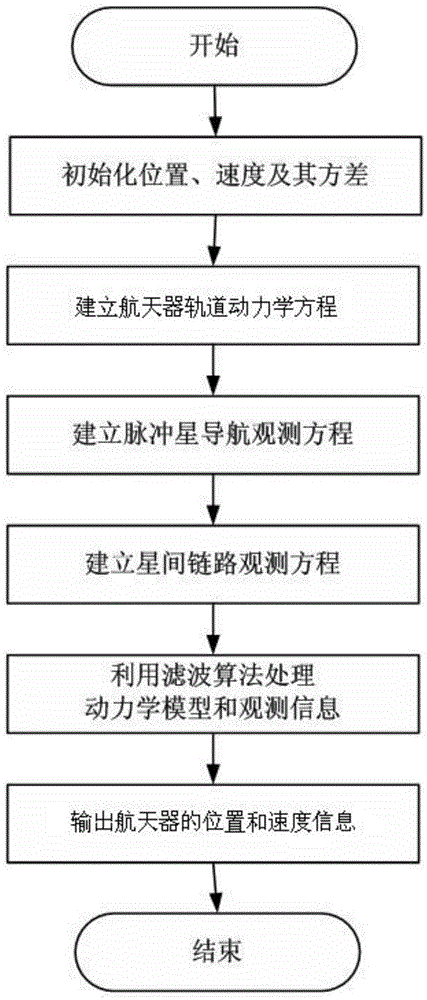Autonomous navigation method for libration point constellation
An autonomous navigation and translation point technology, applied in the aerospace field, can solve problems such as the lack of autonomous navigation of the translation point constellation
- Summary
- Abstract
- Description
- Claims
- Application Information
AI Technical Summary
Problems solved by technology
Method used
Image
Examples
Embodiment 1
[0071] A pulsar-based translation point constellation navigation method, the constellation contains two spacecraft (spacecraft A and spacecraft B), observes three pulsars, and uses the characteristic length and characteristic time in the sun-earth rotating coordinate system Dimensionless processing of distance and time. The initial state of the spacecraft in the sun-earth rotating coordinate system is (146407196.6km, 0km, -800000km) and (0m / s, 356.83m / s, 0m / s), the observation time interval is 1 hour, and the total simulation time is 150 days . The position error of the pulsar catalog is 0.1mas, and the initial navigation error is (10km, 10km, 10km) and (10m / s, 10m / s, 10m / s). The noise value of the dynamical system model is the position q 1 =10 -8 , speed q 1 =10 -10 . The value of DTOA observation noise is 10 -7 .
[0072] Specifically, the following steps are included, see figure 1 :
[0073] The first step: establish the dynamic equation of the orbit of the spacec...
PUM
 Login to View More
Login to View More Abstract
Description
Claims
Application Information
 Login to View More
Login to View More - R&D
- Intellectual Property
- Life Sciences
- Materials
- Tech Scout
- Unparalleled Data Quality
- Higher Quality Content
- 60% Fewer Hallucinations
Browse by: Latest US Patents, China's latest patents, Technical Efficacy Thesaurus, Application Domain, Technology Topic, Popular Technical Reports.
© 2025 PatSnap. All rights reserved.Legal|Privacy policy|Modern Slavery Act Transparency Statement|Sitemap|About US| Contact US: help@patsnap.com



